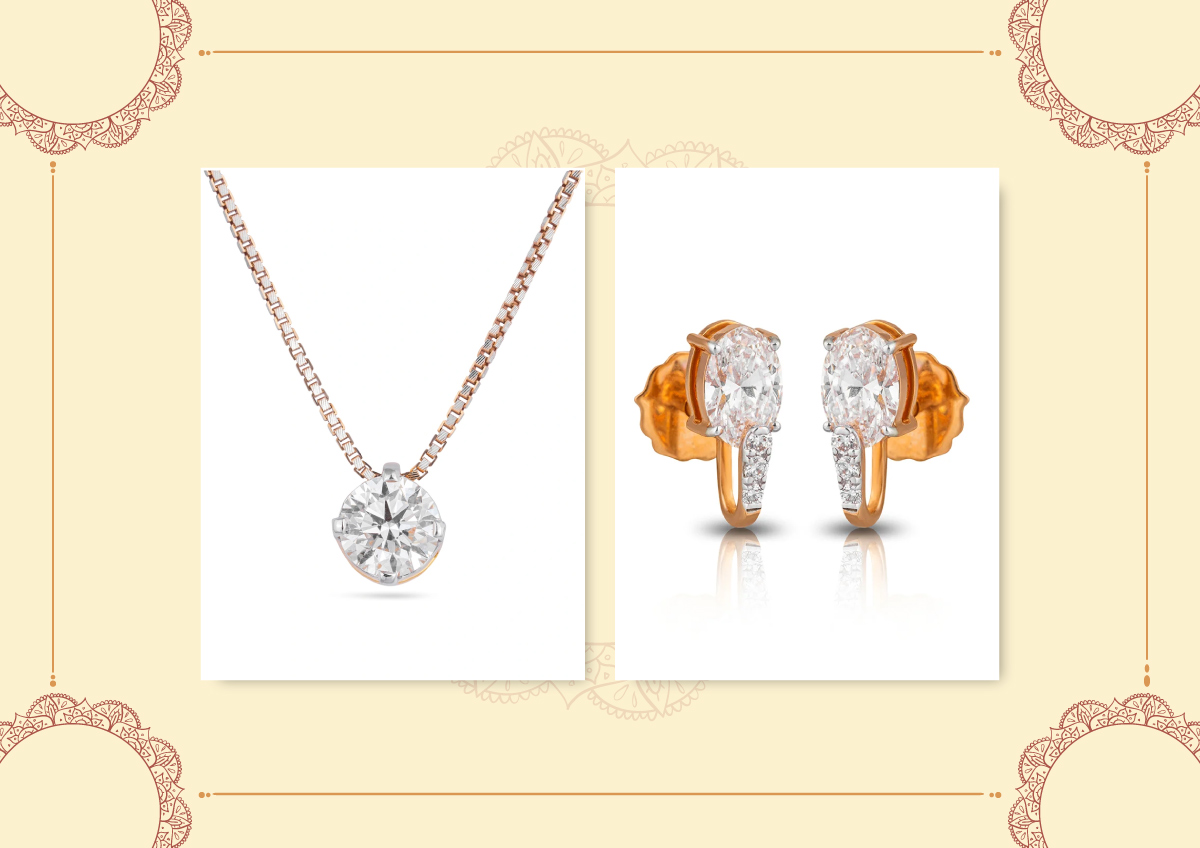What Are Lab-Grown Diamonds Meaning, How They Are Made, and Benefits
Diamonds have long been symbols of love, commitment, and timeless beauty. While natural diamonds form over billions of years beneath the Earthrust, science has introduced a fascinating alternative, lab grown diamonds. But what is a lab grown diamond, exactly? How are they created, and are they real diamonds? Let’s explore the lab grown diamonds process, their meaning, and the many benefits that come with choosing them.
What Is a Lab Grown Diamond?
A lab grown diamond is a diamond that is created in a laboratory setting using advanced technological processes that replicate the conditions under which natural diamonds form in the Earth’s mantle. Unlike imitations like cubic zirconia or moissanite, lab grown diamonds have the same physical, chemical, and optical properties as natural diamonds.
So, when people ask, "What is a lab grown diamond?", the simplest answer is: it's a real diamond, grown above ground instead of below it.
Lab Grown Diamonds Meaning: Why They Matter
The lab grown diamonds meaning goes beyond science — it's about ethics, sustainability, and affordability. These diamonds are often referred to as ethical diamonds or eco-friendly diamonds because they avoid the environmental degradation and ethical issues associated with traditional diamond mining.
For the modern buyer, lab grown diamonds represent conscious choices — a blend of beauty and responsibility.
What Are Diamonds Made Of?
To truly understand how lab grown diamonds are made, we must first understand what diamonds are made of. All diamonds — whether natural or lab grown — are made from a single element: carbon.
Under extreme heat and pressure, carbon atoms bond in a cubic crystalline structure, forming the hardest natural substance on Earth — a diamond.
So, both types of diamonds share the same elemental foundation, and that’s what gives lab grown diamonds their brilliance and durability.
How Are Lab Grown Diamonds Made?
There are two primary methods used in the lab grown diamonds process:
1. High Pressure High Temperature (HPHT)
This process mimics the natural diamond creation method by applying high pressure and high temperature to a carbon source. A diamond seed is placed in carbon, and the environment is subjected to pressures over 1.5 million pounds per square inch and temperatures above 1,500°C.
The carbon melts and begins to form around the seed, eventually crystallizing into a diamond. HPHT diamonds are known for their durability and high clarity.
2. Chemical Vapor Deposition (CVD)
The CVD method involves placing a diamond seed in a vacuum chamber filled with carbon-rich gas (usually methane and hydrogen). This chamber is then heated to about 800°C, breaking the gas molecules apart. Carbon atoms start to settle onto the seed, layer by layer, forming a diamond crystal over time.
CVD diamonds are often more affordable and can be produced with fewer impurities.
Lab Grown Diamonds Process vs. Natural Diamond Formation
While natural diamonds take billions of years to form under Earth’s surface, lab grown diamonds can be produced in a matter of weeks. However, the end result is nearly identical. Even gemologists require specialized equipment to tell them apart.
The major differences lie in:
- Time taken (billions of years vs. a few weeks)
- Environmental impact (mining vs. minimal lab waste)
- Price (lab grown diamonds cost 20–40% less)
- Ethical considerations (conflict-free and cruelty-free)
Types of Lab Grown Diamonds
There are several types of lab grown diamonds, and they’re generally categorized based on their creation method or crystal structure:
Based on Manufacturing Process:
- HPHT Diamonds – Excellent clarity and strength
- CVD Diamonds – Ideal for fine jewelry, highly customizable
Based on Crystal Type:
- Type Ia – Common in natural diamonds
- Type IIa – Found in high-quality lab grown diamonds, known for extreme purity
- Type Ib and IIb – Rare, usually in colored diamonds
Most lab grown diamonds on the market today are Type IIa, making them purer than 98% of mined diamonds.
Benefits of Lab Grown Diamonds
Here’s why lab grown diamonds are becoming increasingly popular:
1. Affordability
Lab grown diamonds are typically 30–40% less expensive than mined diamonds of the same size and quality.
2. Ethical Sourcing
They are 100% conflict-free, with no involvement in war zones or exploitative mining conditions.
3. Environmentally Friendly
The lab grown process requires less land use and water, and it causes no deforestation or ecosystem disruption.
4. Customization
Lab diamonds are easier to control during formation, making it simpler to get custom shapes, sizes, and clarity.
5. Indistinguishable Appearance
They look identical to natural diamonds, even to a trained eye. Only advanced equipment can differentiate them.
Goutham Jewellers – Trusted for Premium Lab Grown Diamonds
If you’re looking to explore lab grown diamonds in Chennai, Goutham Jewellers is a name you can trust. Known for their legacy of quality, precision, and craftsmanship, Goutham Jewellers offers a stunning range of lab grown diamond jewelry tailored for modern tastes.
They source premium-quality diamonds using both HPHT and CVD methods and ensure authentic certification for every purchase. With their commitment to customer trust, ethical sourcing, and exceptional designs, Goutham Jewellers stands out as a leading destination for lab grown diamonds in India.
Whether you're shopping for a proposal, anniversary, or self-love gift, Goutham Jewellers helps you make a responsible yet luxurious choice.





